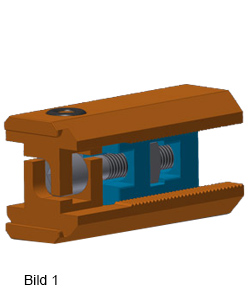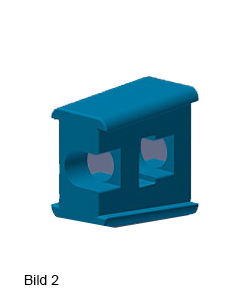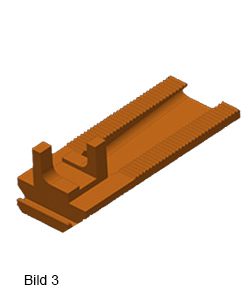Solving the problem using the example of a flat connector: If the mechanical system is chosen so that the direction of the movement is vertically towards the profile level, there cannot develop a shift of the profiles.
Flat connectors
A double wedge is suited best for this purpose. If the position of the profile’s components are contrary towards each other, a shifting during the clamping process cannot happen.



Picture 1(Bild 1) shows a flat profile connector which was designed after these principles. It consists of five components: cheese-head screw, square nut, two slot nuts (picture 2/Bild /) and a double wedge (picture 3/Bild 3).
The double wedge has got two L-shaped Ausbildungen, which takes the Spannuntensteine verschiebbar. When the screw is twisted, the Spannutenstein moves in the double wedge and the Spannutensteine move vertically towards each other. A square nut is put into the double wedge. Because the threas operates as a wedge and due to the impact of the double wedge, a very high reduction is caused, which connects the profiles with a high clamping force. In order that the profiles do not slip out of position due to the displacement forces, the Spannnutensteine have additional teeth wich dig into the profile at the end of the microform.

Do you have questions or would like to get further information?
We are glad to help you. Feel free to contact us
via e-mail or phone 0049 2405 408 1650.

Applied for patent
This product has been patented.

